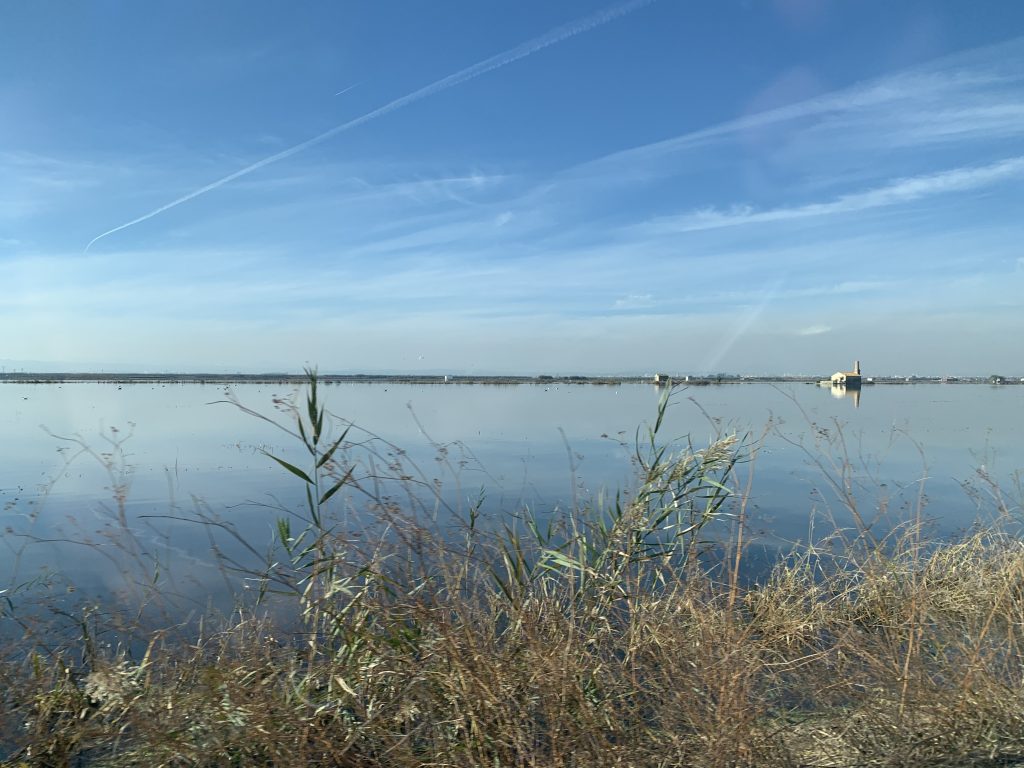Registration fees Cuotas de inscripción
| Fees | Reduced fees Until 30th April 2025 | ||
|---|---|---|---|
| General public | Público general | 370€ | 320€ |
| Undergraduate and postgraduate students | Estudiantes de grado y postgrado | 310€ | 260€ |
| Members of the Scientific Committee | Miembros del Comité Científico | 280€ | 230€ |
| Students without contribution * | Estudiantes sin contribución * | 70€ | 70€ |
Inscription fees include the free entrance to all the conferences, one copy of the conference proceedings (except for students without contribution), certificate of participation and certificate of oral or poster presentation, conference bag and kit, coffee breaks and lunches on 10th and 11th September.
* Only for students that do not present a contribution at the conference. These fees include entrance to the lectures and coffee breaks but do not include lunch buffets and conference proceedings.
The refund policy provides for an 80% refund if it is made before 1st June 2025.
Las cuotas de inscripción incluyen la entrada libre a las conferencias, una copia de las actas del congreso (excepto en el caso de estudiantes sin contribución), certificado de participación y certificado de presentación de ponencia o póster, bolsa y kit de conferencia, cafés y almuerzos de los días 10 y 11 de septiembre.
* Sólo para estudiantes que no presentan contribución en el congreso. La inscripción incluye el acceso a las sesiones y cafés pero no incluye comidas ni las actas del congreso.
La política de reembolso establece una devolución del 80% si se realiza antes del 1 de junio de 2025.
Optional activities fees Cuotas de actividades opcionales
| Fees | ||
|---|---|---|
| Official Closing Dinner (optional) | Cena de clausura (opcional) | 60€ |
| Technical visits (depending on availability) | Visita técnica (según disponibilidad) | 50€ |
| Workshops | Talleres | 60 € |
| Additional proceedings (non-refundable) | Actas adicionales (no reembolsable) | 50€ |
Official Closing Dinner info Información sobre la cena de clausura
Friday, September 12th
It will include travel to the lagoon of Valencia is located about 15 km south of the city, separated by a strip of land from the Mediterranean Sea. It is a natural park full of wildlife, surrounded by rice fields. You will visit a so-called restored barraca, thatched hut on earthen walls, which are the symbol of the city of Valencia, take a boat to watch the twilight of the sunset over the lagoon and dine in a local restaurant for a typical paella.
* Bus included to Valencia Lagoon, but no return to university.
Viernes, 12 de septiembre
Incluirá el desplazamiento hasta la Albufera de Valencia, una laguna situada a unos 15 km al sur de la ciudad, separada por una franja de tierra del mar Mediterráneo. Es un parque natural lleno de fauna y rodeado de arrozales. Se visitará una barraca restaurada, construcción tradicional de paja sobre muros de tierra, que son el símbolo de la ciudad de Valencia. Se cogerá una barca para ver el crepúsculo del sol sobre la laguna y se cenará en un restaurante local una paella típica.
* Bus incluido a la Albufera de Valencia, pero no el regreso a la universidad.
Technical visits info Información sobre visitas técnicas
The Organizing Committee proposes 4 technical visits for optional registration, with the following indicative programs:
Optional Visit to North Castellón
Saturday, September 13th, 8 am – 8 pm
The visit will include the ruins under restoration of the castle of Petrés, official residence of Marshal Suchet during the Napoleonic invasion, built with rammed earth walls and limecrete and tile vaults; the ruins under restoration of the castle of La Vilavella; the pantheon of the Soriano-Manzanet family in Vila-Real, recently built with vaults; the Garden of Memory in Vinaroz, which evokes a demolished monastery with its own rubble and archaeological finds; and the Torre de Cálig, a medieval tower with a long history of uses and transformations that became the town’s discotheque, whose restoration has opted to respect much of its stratification and historical phases. (Only the Castle of La Vilavella foresees a slightly uphill rural path).
Means of transport: bus.
Meals: not included.
Optional visit to Ademuz-Utiel
Saturday, September 13th, 8 am – 8 pm
The Rincón de Ademuz is a region of the Valencian Community hidden in a valley that has largely preserved the traditional character of its vernacular architecture built with gypsum pillars, gypsum-poured jack arched floors, walls of stone slabs bonded with gypsum and tiled roofs. You will visit the village of Sesga with several buildings (300 years old house, bread oven, school, barbershop, tile kiln, wash house, trough, gypsum kiln, etc.), whose restoration in some cases received the 1st European Union Award for Cultural Heritage/Europa Nostra. On the way back we will stop at Utiel, a small town famous for the production of wine, to visit its underground cellars.
Means of transport: bus.
Meals: not included.
Optional visit to Valencia historic center
Saturday, September 13th, 9 am – 1 pm
The visit will focus on getting to know on foot some of the constructive characters of the Valencian historical heritage and will be approached from multiple points of view, especially focused on documenting residential architecture, less known and protected than other emblematic monumental urban buildings.
Throughout the tour, some of the main relationships between architecture and historical fabric will be defined, and those interested will be guided to decipher some of the architectural and constructive characteristics of interesting cases visible today in the old town, assessing their construction, compositional features and transformation / stratification over time.
Means of transport: walking.
Meals: not included.
Optional visit to the Cabanyal neighborhood
Saturday, September 13th, 9 am – 1 pm
The tour will explore on foot this neighborhood that became internationally famous a few years ago for having fought for two decades against the Valencia City Council that wanted to dismantle it to open an access avenue to the sea, and for having won the battle for its preservation. We will visit this maritime district, chosen by The Guardian as one of the 10 coolest neighborhoods in Europe, with its interesting fabric of modernist houses, its extraordinary living catalog of polychrome tiles and many other decorative details. The bioclimatic character of its housing and urban layout, its relationship to the sea, the fish markets, etc. will be examined. The visit will include a stop at a typical place to taste the famous Valencian esmorçaret.
Means of transport: walking.
Meals: not included.
* Subject to possible changes depending on the needs of the organization, the number of participants or the climatic conditions.
** Technical visit fees do not include meals.
El Comité Organizador propone 4 visitas técnicas de inscripción opcional, con los siguientes programas indicativos:
Visita opcional al Norte de Castellón
Sábado 13 de Septiembre, 8 am – 8 pm
La visita incluirá las ruinas en curso de restauración del castillo de Petrés, residencia oficial del mariscal Suchet durante la invasión napoleónica, construido con muros de tapia y bóvedas de hormigón de cal y bóvedas tabicadas; las ruinas en curso de restauración del castillo de La Vilavella; el panteón de la familia Soriano-Manzanet en Vila-Real, construido recientemente con bóveda tabicada; el Jardín de la Memoria en Vinaroz, que evoca un monasterio demolido aparejando sus propios escombros y hallazgos arqueológicos; y la Torre de Cálig, una torre medieval con una larga historia de usos y transformaciones que llegó a ser la discoteca del pueblo, cuya restauración ha optado por respetar gran parte de su estratificación y fases históricas. (Solo el Castillo de La Vilavella prevé un camino rural en ligera subida).
Medio de transporte: bus.
Comidas: no incluidas.
Visita opcional a Ademuz-Utiel
Sábado 13 de Septiembre, 8 am – 8 pm
El Rincón de Ademuz es una comarca de la Comunidad Valenciana escondida en un valle que ha conservado en gran medida el carácter tradicional de su arquitectura vernácula construida con pilares de yeso, forjados de revoltones de yeso vertido, paredes de lajas de piedra recibidas con yeso y tejados de teja. Visitaremos el pueblo de Sesga con varios edificios (casa de 300 años de antigüedad, horno de pan, escuela, barbería, horno de tejas, lavadero, abrevadero, horno de yeso, etc.), cuya restauración en algunos casos recibió el 1er Premio Unión Europea de Patrimonio Cultural/Europa Nostra. De regreso nos detendremos en Utiel, pequeña localidad famosa por la producción de vino, para visitar sus bodegas subterráneas.
Medio de transporte: bus.
Comidas: no incluidas.
Visita opcional al Centro Histórico de Valencia
Sábado 13 de Septiembre, 9 am – 1 pm
La visita se centrará en conocer a pie algunos de los caracteres constructivos del patrimonio histórico valenciano y se abordará desde múltiples puntos de vista, especialmente centrados en documentar la arquitectura residencial, menos conocida y protegida que otros emblemáticos edificios urbanos monumentales.
A lo largo del recorrido se definirán alguna de las principales relaciones entre arquitectura y tejido histórico, así como se guiarán los interesados a descifrar algunos de los caracteres arquitectónicos y constructivos de casos interesantes visibles hoy en día en el casco antiguo, valorando su construcción, rasgos compositivos y transformación/ estratificación en el tiempo.
Medios de transporte: a pie.
Comidas: no incluidas.
Visita opcional al barrio historico del Cabanyal
Sábado 13 de Septiembre, 9 am – 1 pm
La visita explorará a pie este barrio que se hizo internacionalmente famoso hace unos años por luchar durante dos décadas contra el Ayuntamiento de Valencia que quería desventrarlo para abrir una avenida de acceso al mar, y por haber ganado la batalla por su conservación. Se visitarán este barrio marítimo, elegido por The Guardian como uno de los 10 barrios más cool de toda Europa, con su interesante tejido de viviendas modernistas, con su extraordinario catálogo vivo de azulejos polícromos y muchos otros detalles decorativos. Se examinará el carácter bioclimático de sus viviendas y su disposición urbanística, su relación el mar, las lonjas de pescado, etc. La visita incluirá una parada en un lugar típico para degustar el famoso esmorçaret valenciano.
Medios de transporte: a pie.
Comidas: no incluidas.
* Sujetas a posibles cambios en función de las necesidades de la organización, el número de participantes o las condiciones climáticas.
** Las cuotas de inscripción a las visitas técnicas no incluyen las comidas.
Workshop Talleres
The Organizing Committee proposes 2 workshops for optional registration, with the following indicative programs:
Burnished finishes: tadelakt
Wednesday, September 10th, 10 am – 2 pm (4 hours)
Practical workshop: The aim of this workshop is to acquire basic knowledge about the ancestral technique of tadelakt and its application.
- Introduction to the material and technique, origin, application, supports and tools.
- Demonstration of the application through a sample of various products at different stages of its creation, explaining the construction process and the tools used.
- Creation of tadelakt on a previously prepared support.
Number of participants: 20 max.
Teacher: Syrka Helmdach-Lopez Altuna. Okambuva.
Designer, teacher, and trainer at the Okambuva Training Center in natural lime and earth plasters, and co-founder of the same bioconstruction cooperative, she offers a workshop to discover the authentic Moroccan tadelakt technique as well as other finishing techniques, including both burnished and textured earth finishes. She brings samples in different stages of production to demonstrate the step-by-step process. She has extensive knowledge of traditional techniques, both in terms of materials and tools. She also incorporates pictorial techniques such as Segovian sgraffito and many others.
Gypsum flooring
Wednesday, September 10th, 10 am – 2 pm (4 hours)
Practical workshop:
The aim of this workshop is for the student to receive the basic notions of how a traditional plaster pavement is made, attending to its execution and the peculiarities of this technique using Alabaster as raw material.
- Introduction to the traditional process of obtaining the material, the technique and the tools.
- Demonstration of the application of the different phases during the execution of this paving.
- Manufacture of the paving on a previously prepared support.
Number of participants: 20 max.
Teacher:
Andrés Millán. Nohuki.
Company dedicated to the elaboration of decorative coatings, facade with traditional plaster and continuous pavements with plaster made 100% with natural alabaster cooked at high temperature. Oriented to build high Energy Efficiency and Healthy houses, they are in continuous training to be able to offer good advice on bio-construction, sustainability and respect for the environment. They stand out for their criteria and techniques that guarantee a healthier home, using non-polluting, non-toxic, reusable and recyclable materials, saving energy and taking advantage of renewable energies.
* Subject to possible changes depending on the needs of the organization, the number of participants or the climatic conditions.
El Comité Organizador propone 2 talleres de inscripción opcional, con los siguientes programas indicativos:
Acabados bruñidos: tadelakt
Miércoles, 10 de septiembre, 10 am – 2 pm (4 horas)
Taller práctico: El objetivo del presente taller es la adquisición de conocimiento básico sobre la técnica ancestral del tadelakt y su aplicación.
- Introducción sobre el material y la técnica, origen, aplicación, soportes y herramientas.
- Demostración de la aplicación a través de un muestrario de varios productos en diferentes fases de su creación se explicará el proceso constructivo y las herramientas utilizadas.
- Realización de tadelakt sobre un soporte previamente preparado.
Personas: 20 máx.
Docente: Syrka Helmdach-Lopez Altuna. Okambuva.
Diseñadora, maestra y formadora del Centro de Formación de Okambuva en revestimientos naturales de cal y de tierra, cofundadora de la misma cooperativa de bioconstrucción, ofrece un taller para conocer la técnica auténtica marroquí del tadelakt y otras técnicas de acabados, tanto bruñidos como texturizados en tierra. Trae muestras en sus diferentes estados de producción para enseñar, paso a paso, el proceso. Tiene un amplio conocimiento del uso de técnicas tradicionales, tanto de los materiales como de las herramientas. Implementa técnicas pictóricas como el esgrafiado segoviano y muchas otras.
Pavimentos de yeso
Miércoles, 10 de septiembre, 10 am – 2 pm (4 horas)
Taller práctico: El objetivo del presente taller es que el alumno reciba las nociones básicas de cómo se realiza un pavimento de yeso tradicional, atendiendo a su ejecución y las peculiaridades de esta técnica utilizando el Alabastro como materia prima.
- Introducción sobre el proceso de obtención tradicional del material, la técnica y las herramientas.
- Demostración de la aplicación de las diferentes fases durante la ejecución de este pavimento.
- Realización del pavimento sobre un soporte previamente preparado.
Personas: 20 máx.
Docente: Andrés Millán. Nohuki.
Empresa dedicada a la elaboración de revestimientos decorativos, fachada con yeso tradicional y pavimentos continuos con yeso elaborado 100% con alabastro natural cocido a alta temperatura. Orientados a construir viviendas de alta Eficiencia Energética y Sanas, se encuentran en formación continua para poder ofrecer un buen asesoramiento en bioconstrucción, sostenibilidad y el respeto al medio ambiente. Destacan por sus criterios y técnicas que garantizan una vivienda más saludable, utilizando materiales no contaminantes ni tóxicos, reutilizables y reciclables, ahorrando energía y aprovechando las energías renovables.
* Sujetas a posibles cambios en función de las necesidades de la organización, el número de participantes o las condiciones climáticas.










